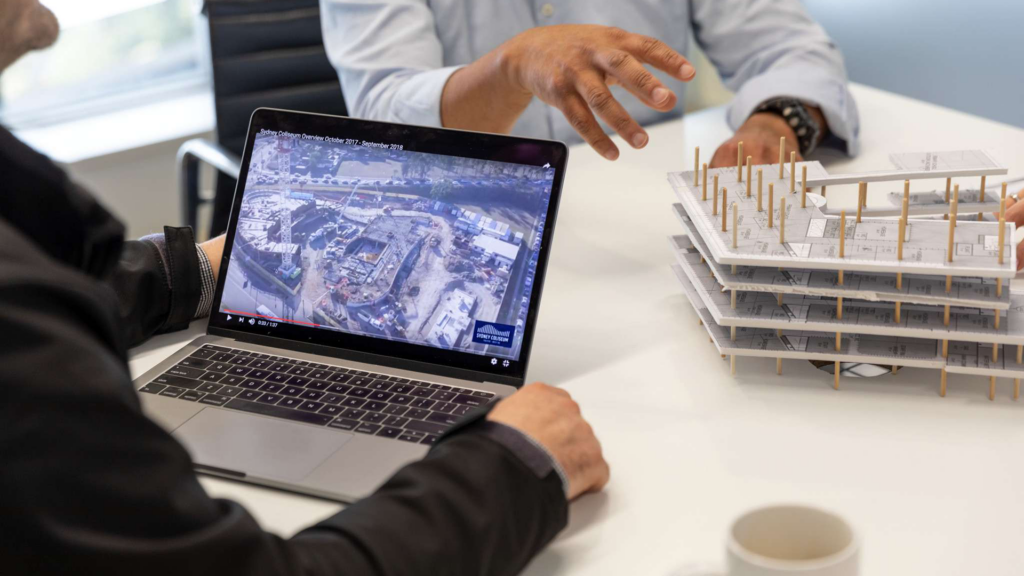In today’s post, I’d like to discuss AEC firms’ most common criteria when evaluating CRMs. It is important to note that there is no one CRM that fits every firm. Different Engineering, Construction, and Architecture firms have different needs and priorities. However, there are some universal criteria.
In evaluating a new CRM, start by asking, “What are we trying to accomplish?” “What problems do we want to solve?” “Which features are a must, and which are nice?” Rank them in order of importance. The evaluation process will require in-depth internal discussions to ensure you address the needs of all teams within the firm.
CRMs often fail because of a lack of buy-in from individuals and teams. If a few or a small group decides they need a CRM and buys it, firm-wide adoption is likely to struggle. These “small group” purchases often occur when a CRM is purchased as part of a financial ERP initiative.
The finance group runs most or all of the evaluation and decides on an “all-in-one” system. If the new system proves too complicated for other teams, such as marketing and business development, those teams may not use it.
Here are the top CRM evaluation criteria we hear from mid to large-sized firms. In these firms, growth is a priority, as they have multiple locations and dedicated marketing and business development teams.
ROI (Return on Investment)
How does CRM benefit your firm financially and intangibly? Too many firms look at CRM and other software as an expense. It’s all about how much it will “cost” them.
Businesses should view CRM as an investment. CRM’s return on investment is hard to predict since many variables exist. The main thing to remember is that the right CRM will generate new revenue for your firm. In a future blog, I’ll discuss building a CRM business case based on ROI.
Ease of use and adoption
CRMs typically succeed or fail based on adoption. It is, therefore, crucial that whatever CRM you choose is easy to learn and use. In addition, it should facilitate data capture for more valuable data.
We’ve all heard the phrase “garbage in, garbage out.” A lot of “garbage out” is caused by complex systems that prevent good data from entering. Look for a CRM that makes data capture easy. Make manual data entry automatic by automating data capture where people work, their email, and other systems.
A successful CRM system will help drive desired behaviors and outcomes. They facilitate data entry rather than making it complicated. The most successful CRMs are intuitive and can automate and streamline processes to drive adoption. Furthermore, they can reduce errors, duplications, errors in numbering, and names.

Single sources of truth for project pursuits
Most firms struggle with data scattered across multiple systems. These firms prioritize having a single place to house their past project history and track their current pursuits.
Marketers need access to past project details and resumes to create winning proposals. The seller-doers and business developers need a tool to accelerate their work. Adding, looking up, and updating data must be easy in your CRM if you want it to be your single source of truth. CRM must be accessible from the office, email, phone, and tablet.
Time Savings
With the right CRM, all users will save time. Marketers, Business Developers, and Executives are typically most impacted. Information is often hard to find for marketers. Without a single source of truth, they are constantly digging through old proposals, emails, and various systems, calling people for information.
Business Developers are always on the go. They need customer and project details at their fingertips to move faster and win more. Executives save time primarily through up-to-date dashboards and reporting.
Too many AEC leaders are wasting time sifting through endless spreadsheets and disparate systems. The bottom line is that firms are looking for solutions to free up time for employees to focus on more critical activities.
Integrations
One of the most significant needs of medium to large AEC firms is integrating with other systems. A CRM that syncs with calendar, email, and front-end marketing tools is always a high priority. Employees constantly jump between systems, lose track of things, and struggle to manage and prioritize activities.
The next step most firms typically want to take is to integrate with their financial ERP and project management software. For many of the firms we speak with, integration capabilities are the #1 reason they choose a particular CRM over another.

Automating manual work and workflows
Automating manual tasks is a significant driver for many firms choosing a CRM. Reducing the amount of manual work, data entries, and redundant processes is one of the main drivers for purchasing a new CRM. This ties back to the time savings criteria listed earlier. On top of the time savings, automation helps reduce human errors and improve communication between teams and individuals.
TrebleHook works with our customers to automate as much as possible for them. Marketing wants to get a notification when a proposal due date is known; we can automate an email to them. Executives want a report delivered every Monday at 8 AM, no problem. Automation is key to freeing time and providing information to the right people at the right time.
Improved visibility
Everyone in the firm will benefit from improved visibility with the right CRM. Executives are insisting on real-time visibility into their data. They need insight into the health of their business and future projections to help them make the best business decisions.
AEC executives today are demanding powerful dashboard visualizations and accurate, timely reporting. Many executives are still spending too much time gathering and interpreting data, or they wait for others to compile reports for them. They want a system that shows them where the numbers are so they can accurately forecast and allocate resources efficiently. A robust CRM like TrebleHook provides business intelligence to leadership and visibility to identify the best projects and clients, how they are trending and how they can pursue and land more of the right projects.
Improved collaboration
Firms today are looking to improve collaborative efforts across different teams, markets, offices, and divisions. Promoting cross-sell opportunities is a high priority for many firms we speak with. The right CRM allows everyone to work together and be aware of other colleagues’ activities. It helps colleagues to leverage each other’s expertise and relationships, avoid duplicating efforts, and (as I hear a lot) “bumping into each other instead of working together.”
As a project moves through its lifecycle, collaboration between groups can produce many benefits. Two areas we often hear about needing improvement are the project startup and project closeout process. TrebleHook facilitates project startup by automating the hand-off to accounting and closeout from project managers to the marketing team.
Capture more critical data
The actual value of a firm is rooted in the relationships forged and successful project experience over some time. The huge problem is that much of that value can slip away without the right CRM. Data in people’s heads walks out with them whether they retire or leave for any reason.
One of the biggest reasons firms finally decide to invest in a new CRM is to prevent “brain drain.” More forward-thinking firms are also maximizing the value of their data for strategic analysis, planning, and decision-making. They use data to analyze and determine where and why they are winning and losing to gain a competitive edge.
Finally, having a CRM that is easy to use and access all the firm’s historical data is essential to attract talent. New employees want to join a firm where they are set up for success and can onboard and contribute quickly. Having no CRM or the wrong CRM can deter them from joining or prompt them to leave.

Scalability
Let’s be honest; buying any new software that requires an implementation and training process is not fun, whether it’s CRM, ERP, Project Management Software, or HR systems. It can be time-consuming and expensive. Some systems take years to roll out. Some get axed partway through the process because it’s not working out.
Beware of systems that are more closed and cannot scale efficiently. If you make the wrong choice, it’s hard to go back and say, “let’s try that again.”
I’ve often heard, “leadership made the decision, and there is no way they will walk it back now. We just have to live with it.” Because firms want to avoid potential pain, it’s tempting to bring on a simple CRM, low-cost, minimal intrusion to the business.
This is the digital Rolodex solution: I know we need a CRM. Everyone is using a CRM, we need one to compete, so we will just get a lightweight system that gives us the basics, a place to put all our contacts and clients, set up some tasks, and record interactions.
This might be the best way for smaller firms with simple needs, but a simple CRM is the wrong choice for most mid-large size AEC firms. They need a CRM that can scale with their business, is easy to use, powerful, and will grow with them.
